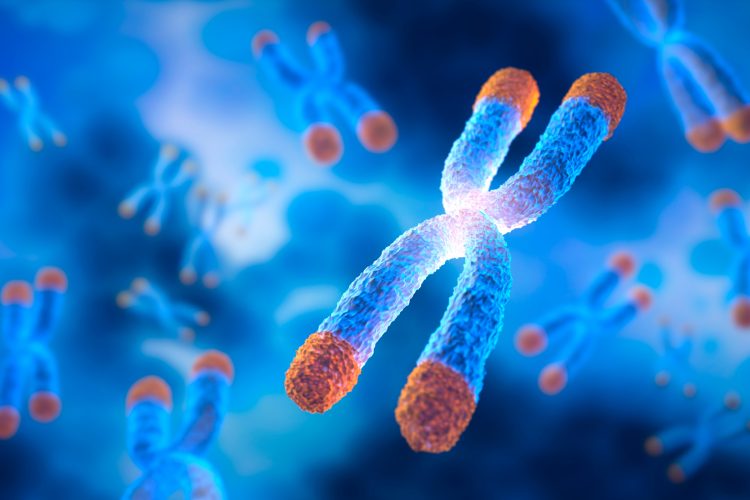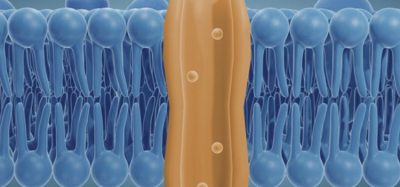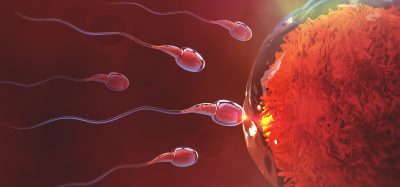Restoring TERT to attenuate ageing hallmarks
Posted: 2 August 2024 | Dr Ronald DePinho (UT MD Anderson Cancer Center) | No comments yet
In this Q&A, Dr Ronald DePinho of MD Anderson elucidates their preclinical proof-of-concept that adjusting TERT levels could be a viable therapeutic approach for mitigating age-related diseases, such as cancer, heart disease and Alzheimer’s.


How does the epigenetic repression of TERT contribute to cellular decline during ageing?
Telomerase reverse transcriptase (TERT) is known to play a very important role in maintaining telomeres, the ends of chromosomes, which are critically important for the maintenance of health. It has been shown by our lab 30 years ago that if you inactivate TERT or other components that are essential for telomere synthesis, this can lead to premature ageing, cancer and other maladies.
One of the things that we discovered was that TERT also regulates transcription factors. These are integral to the maintenance of a youthful cell state, and as such they regulate many different hallmarks of ageing. TERT is at this nexus of not only maintaining chromosomal integrity, but also regulating gene expression programmes that maintain a useful cell state. Therefore, the level of TERT matters a great deal, so in germ cells and in tissue stem cells, we maintain robust levels of TERT that enables a 90-year-old to still generate a trillion blood cells per day or renew their intestinal epithelium or their skin virtually every two weeks for their entire lives. That is important because that relates to telomere maintenance synthesis, as well as relating to the fact that TERT helps to regulate gene expression patterns to maintain that stem like state.
With the onset of ageing in humans in their 40s and 50s or the equivalent age in mice, around 18 months of age, the TERT locus is epigenetically repressed resulting in a reduction in TERT levels by around 50 percent in somatic cells. This reduction is coincident with the onset of ageing which is characterised by the emergence of senescent cells, systemic inflammation and other hallmarks of ageing. This reduction in TERT is associated with gene expression programmes that are integral to ageing hallmarks.
Biomarkers aren’t just supporting drug discovery – they’re driving it
FREE market report
From smarter trials to faster insights, this report unpacks the science, strategy and real-world impact behind the next generation of precision therapies.
What you’ll unlock:
- How biomarkers are guiding dose selection and early efficacy decisions in complex trials
- Why multi-omics, liquid biopsy and digital tools are redefining the discovery process
- What makes lab data regulatory-ready and why alignment matters from day one
Explore how biomarkers are shaping early drug development
Access the full report – it’s free!
Therefore, the age-associated decline in TERT levels via epigenetic regulation emerged a potential instigator of the ageing process. This observation prompted us to search for small molecules that might de-repress TERT, restore physiological levels, and potentially impact hallmarks of ageing.
How did the researchers identify the small molecule compound that could restore TERT levels?
Recognising that TERT is not regulated in precisely the same way in mice and in humans. We utilised a system that could identify small molecules that could restore both mouse and human TERT.
At that time, we were not certain that the only level of regulation was at the level of the promoter and epigenetic regulation in the human TERT locus. Therefore, we generated a mouse which contained 160 kilobase transgene from the human TERT locus. This 160 kilobase stretch of DNA contained all the regulatory elements to recapitulate the temporal and spatial expression of human TERT in the mouse tissues, indicating that all the regulatory elements were present.
Using the cells derived from that mouse, we then screened a close to approximately 700,000 compounds with our collaborators at the Scripps Institute to search for compounds that could increase TERT expression via changes the epigenetic repression pattern of the human TERT locus. Indeed, we discovered several molecules, one of which is reported in the paper that we call “telomerase activating compound” (TAC). In human cells and mouse tissues, we showed that TAC increased TERT expression to levels seen in more youthful cells.
It is important to note that TAC increases TERT expression in the physiological range as opposed to the very high levels (approximately 10-fold higher) observed in cancer cells. Thus, we achieved our first goal of TERT restoration, increasing levels by 50 to 100 percent.
As a first step in assessing the biological impact of increased TERT expression, we showed in primary human cells that TAC could increase telomere reserves and extend replicative potential of these cells.
What specific improvements in cognitive and neuromuscular functions were observed in the preclinical models after TAC treatment?
To test TAC in brain and neuromuscular function, we initiated TAC treatment in very old mice aged 20 to 22 months (equating to a human aged 70 to 75). Mice were treated with TAC or vehicle control for six months until 26 to 28 months of age which is close to the end of their expected lifespan.
We first focused on the brain as this organ system is central to many age-related health challenges. We found that TERT restoration was able to spur new neuron formation in the hippocampus. The continual neuron formation in the hippocampus is very important for the maintenance of working memory over lifetime. In aged individuals, there is little, if any, neurogenesis so working memory function declines over time. Additionally, if cancer patients are treated with certain chemotherapeutic agents, neurogenesis can be wiped out leading to ‘chemo brain’ which manifests as decreased executive function and impaired memory.
To assess TAC in brain function, the mice subjected to three different learning and memory tests: Barnes maze, Y maze and novel recognition.
Also, we studied the gene expression patterns in the hippocampus upon TAC treatment. We observed expression patterns linked to new neuron formation, learning and memory, presynaptic vesicle formation, and dopaminergic neurogenesis. Conversely, we observed a decline in neuroinflammatory genes.
We next assessed TAC in neuromuscular function since sarcopenia (muscle atrophy) is a very important aspect of ageing. Upon TAC treatment, transcription factors that are known to be master regulators of myogenesis such as MyoD, Myogenin and PAX3 were all increased in their expression. Accordingly, TAC treatment resulted in improved grip strength, balance and coordination.
How did TAC treatment affect inflammatory markers and senescent cells in the models?
TAC treatment led to a drastic decrease in inflammatory cytokines. Inflammatory cytokines increase in your 40s and 50s, leading to inflammation in all tissues – so-called ‘inflammageing’.
The other ageing hallmark that we assessed was the presence of senescent cells, which are known instigators of inflammation and tissue damage. Senescent cells were eliminated in the older mice.Mechanistically, one of the master regulators of senescence is the P16 gene. We knocked out this gene 30 years ago to show it was a tumour suppressor and integral to cellular mortality. Upon TAC treatment, DNA methyl transferase 3B is induced which methylates the promoter of P16 resulting in decreased P16 levels. The reason for this is that one of the genes that TAC upregulated was. This molecular mechanism drives the elimination of senescent cells.
How might these findings change the current understanding of treatment of diseases such as Alzheimer’s, Parkinson’s, heart disease and cancer?
We showed, through genetic experiments, that TERT levels matter in Alzheimer’s disease (AD), observing the declination of TERT levels with the onset of Alzheimer’s pathology in mice and in humans. Using transgenic approaches, we genetically restored TERT in two animal models of Alzheimer’s as well as in human IPS cell-derived neurons.
We found that the genetic maintenance of TERT similar to what I described on the ageing front, dramatically decreased the progression of Alzheimer’s. It diminished microglial activation or neuro inflammation, decreased amyloid accumulation and plaque formation, and maintained cognition. Ongoing studies will determine whether TAC can also directly affect Alzheimer’s disease progression.
Ageing and its mechanisms are linked to the pathogenesis of cancer, diabetes, heart disease and Alzheimer’s. As such, the thinking is that if you can impact the hallmarks of ageing, you may diminish the incidence of chronic age-related diseases. I view ageing as just another disease, a condition with 100 percent incidence and 100 percent mortality, which also drives increased risk of age-related diseases.
Of course, beyond ageing per se, there are specific genetic factors that can also drive these age-associated diseases such as APOE alleles that can further contribute to the pathogenesis of AD or germline tumour suppressor mutations or life-style factors such as tobacco use that predispose you to cancer. Therefore, there are genetic and environmental factors beyond ageing itself that can contribute to development of these age-associated diseases. That said, advancing age is the most important factor that can dramatically influence the incidence of those diseases. At the same time, it is worth noting that we can influence the trajectory of the ageing process through lifestyle changes such as exercise and healthy diets. Ultimately, we aim to develop pharmacologic interventions that can complement healthy lifestyle changes.
What challenges might researchers face when translating these findings from preclinical models to human clinical trials?
It must be made very clear that it remains to be determined whether this is going to be helpful for patients. The chemical nature of the TAC molecule may require modifications and testing prior to use in humans. Specifically, we must conduct IND enabling studies such as toxicology. While we did not observe any toxicity in mice, it is essential that we conduct such studies in additional preclinical models. In addition, we would need to conduct PK, manufacturing and formation studies for ultimate use in clinical trials. Even with these IND-enabling studies, it is important to appreciate that animal models do not always predict how humans going to respond. Thus, clinical trials will be the ultimate test for safety and efficacy in humans.
Nevertheless, TAC has provided us with encouraging preclinical proof of concept data, showing that restoring TERT levels represent a potential therapeutic strategy for attenuating ageing hallmarks and, as such, potentially impacting the incidence and progression of age-related diseases such as cancer, diabetes, heart disease and Alzheimer’s.
About the author
Dr Ronald DePinho, professor of cancer biology and past president at UT MD Anderson Cancer Center


His honours include Szent-Györgyi Prize, AACR Clowes Award, Ellis Island Medal of Honor, Portuguese knighthood, and honorary degrees. He is a member of the National Academies of Science and Medicine and a fellow of the American Academy of Arts and Sciences, AAAS and AACR.
Related topics
Cytokines, Drug Targets, Epigenetics, Small molecule, Therapeutics
Related conditions
ageing, Alzheimer's disease (AD), Cancer, Diabetes, Heart disease
Related organisations
UT MD Anderson Cancer Center
Related people
Dr Ronald DePinho (UT MD Anderson Cancer Center)








